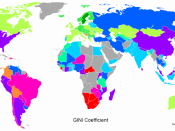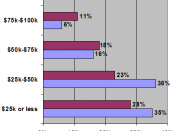Cities, the Hub of American Culture In the cities of the late nineteenth century the class structure was defined by geography. The poor tended to live in the inner city in the factory districts, the middle class moved out to the suburbs, while the social elite insulated themselves from the world in exclusive sections of the cities or they moved out beyond the suburbs completely. Because of this well-defined class system an even more defined urban culture was born, dependency upon ethnic social institutions and new leisure activities enabling the city inhabitants to accommodate themselves to the world in which they live. The city evolved into the hub of high culture in America.
The low-income residents were affected the hardest by the unprecedented urban growth. During earlier times low-income families would live in small wooden hovels in alleys and back streets or they would move into the homes of families that had moved to better neighborhoods.
The rising land values after the Civil War made this practice unprofitable so speculators began building housing especially designed for low-income families of the inner cities. In New York's Eleventh Ward an estimated 986 people occupied each acre of land.
In contrast to the low-income families who moved further inside of the cities, the middle-class, preferring privacy, moved into the suburbs away from the commotion and congestion of the cities. Where a family lived within the suburb was a map of just where a family ranked within the hierarchy of the times. The further away from the city a family lived from the city the larger the lots and the better quality the homes. The prosperous professionals and businessmen who had the flexible schedules could afford to live farther out from the cities. The people closer to the cities needed the transit systems...


